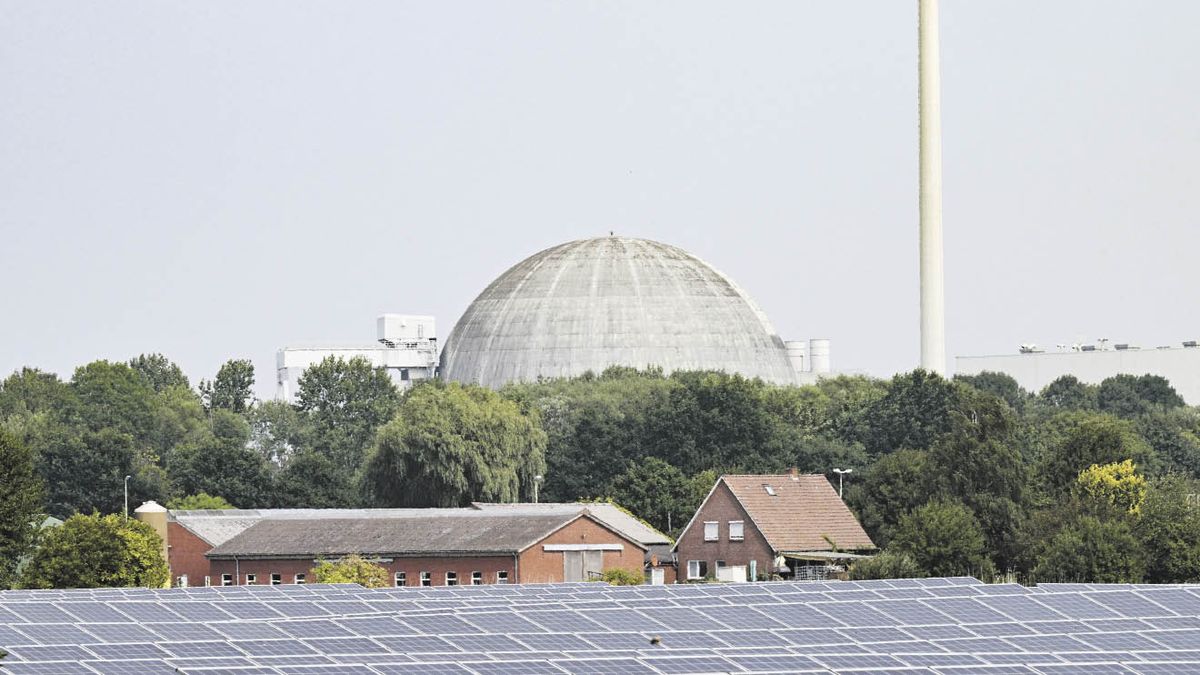62 years after the first commercial nuclear plant came into operation, the main economy of the continent today disconnects the rectors in Isar 2, Neckarswestheim and Emsland, in a move that generated mixed reactions.
At the iconic Brandenburg Gate in Berlin, activists from greenpeacewho installed the figure of a sun with a sword in hand on a replica of a defeated dinosaur, and the association nukleariain favor of nuclear energy, which they defend as “cheap, clean and at the service of the citizens”.
Within the government coalition there are also clashes: the Minister of the Environment, steffi lemkefrom the Los Verdes party, said that “abandoning nuclear power makes the country safer”while the head of the Finance portfolio, the liberal christian lindnerconsidered that “it is a strategic mistake” dismantle the plants, since it nullifies the possibility of “starting them up in the coming years” if that source of electricity is necessary.
There are several historical reasons that explain the Germany’s reluctance towards nuclear power. One is that it was directly affected by the radioactive fallout from the Chernobyl accident. due to the direction the winds were blowing. A second is that it became a strongly pacifist country as a result of its responsibility during the First and, above all, the Second World War,” he explained to Télam. Miranda SchreursProfessor of Environment and Climate Policy at the Technical University of Munich.
Another factor indicated by the academic is linked to the strong anti-nuclear sentiment stemming from fear of such a conflict during the Cold Warin a country that at that time was split in two: “Many citizens worried that a new and really catastrophic war could develop in Europe and that Germany would be ground zero.”
The Greens party and the Social Democrats that today are facing each other over the atomic disconnection were already partners in 2002when the then chancellor Gerhard Schröder signed the law to phase out nuclear power (since then, 16 of the 19 active reactors have been closed) and that its successor, Angela Merkelof the Christian Democratic Union (CDU), decided speed up in 2011 after the Fukushima disaster in Japan.
“After Chernobyl we were assured that this type of accident only happened because it was in a Soviet-era plant, but Fukushima occurred. And with each new accident, society loses confidence”, indicated Schreurswho was part of the team appointed by Merkel to move forward with more secure energy.
The cut off of Russian gas supplies as a result of the war in Ukraine slightly postponed plans on the end of nuclear power plantsoriginally scheduled for December 31, and forced to wait for the results of the pilot test of the first boreal winter without that hydrocarbon on which Germany was heavily dependent to heat houses and move the machinery of its powerful industries.
Despite this new context, according to Schreurs there are no risks of massive outages due to the disconnection of the reactors: “Germany produces more electricity than it consumes, so there may be a small reduction in exportsbut in the last few months nuclear power only accounted for about 3% of generation of electricity (compared to almost 30% in the 1980s)”.
“The European energy system will be able to cope with the coming winter, but without the German centrals the mattress is smaller”, he commented to this agency Georg Zachmanan expert in energy policy, when analyzing the impact that the Berlin decision could have on reduce the sale of electricity surplus to its partners in the region.
Other sources of energy from Germany
Although environmental organizations support switch to nuclear powerr, the country is still far from rectifying its course in order to achieve its ambitious climate goals: the coal still represents a third of electricity production, with an increase of 8% last year to compensate for the absence of Russian gas.
There is a forecast of stop all coal-fired power plants in the country by 2038 at the latest, with a first wave of closures in 2030but to achieve this you need to accelerate the incentive for renewable energy.
“Germany has plans for its electrical system that would make it possible to get rid of coal-fired power plantsreplacing them with huge investments in wind and solar generation integrated into a massively improved storage and transmission infrastructure,” he explained. Zachmanan analyst at Brugel, a Brussels-based think tank that specializes in European economics.
Nuclear power in the world
This policy goes against the grain of the other powers that still bet on nuclear energy under the arguments of not producing carbon emissions (although it does produce radioactive waste) and its low cost once the initial investment has been made: United States with 92 reactors and China with 57 head the list of the 32 countries (including Argentina) that have active power plants.
Within Europe, France has 56 reactors, which makes it the country with the most energy of nuclear origin per inhabitant in the world, and the president Emmanuel Macron announced the construction of at least six more in the coming decades.
United KingdomMeanwhile, it has nine reactors in operation, most of them in their final cycle, and until 2050 it plans to build eight.
“While Germany shuts down existing plants that could continue to supply power at relatively low cost, other countries are building extremely expensive new nuclear power plantswhen there seem to be cheaper alternatives like offshore wind power,” Zachmann said.
“Therefore, both the European countries most favorable to nuclear energy and those most contrary to it do not seem to be guided by a purely economic rationale,” he concluded.
Source: Ambito




